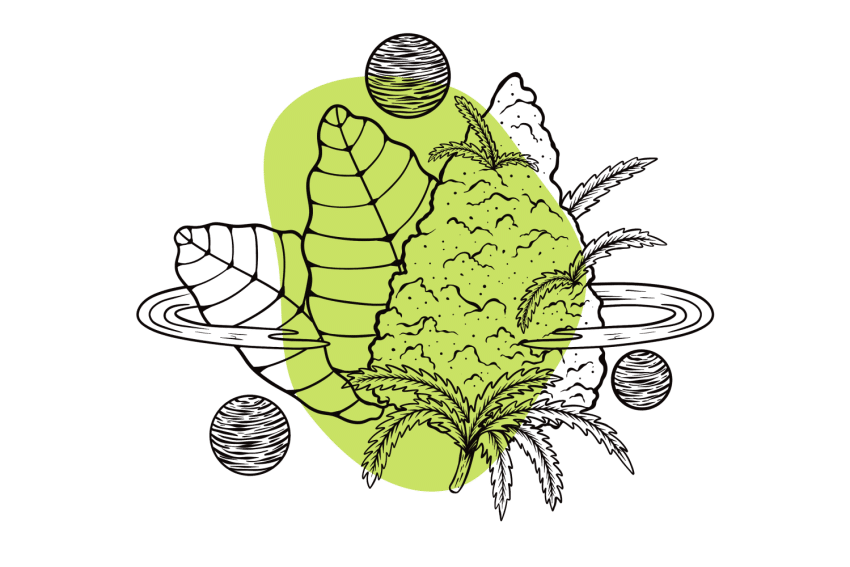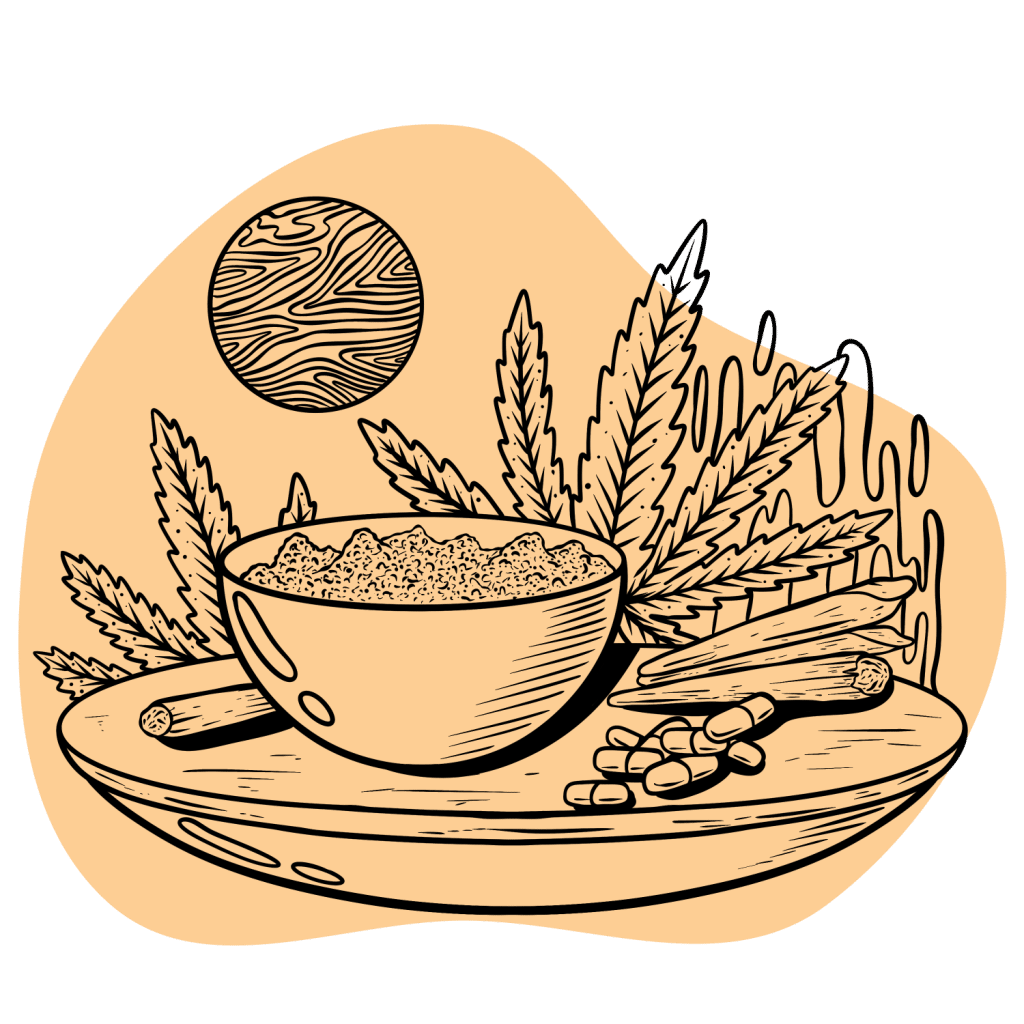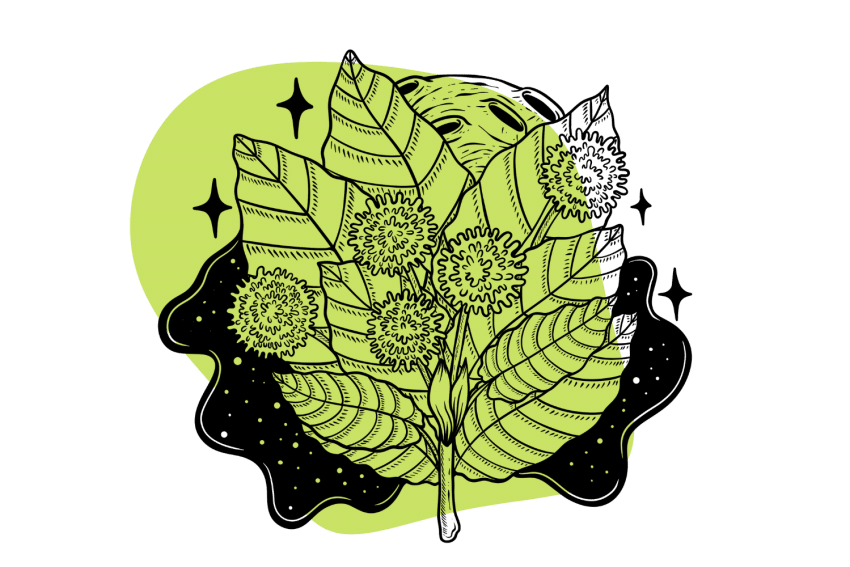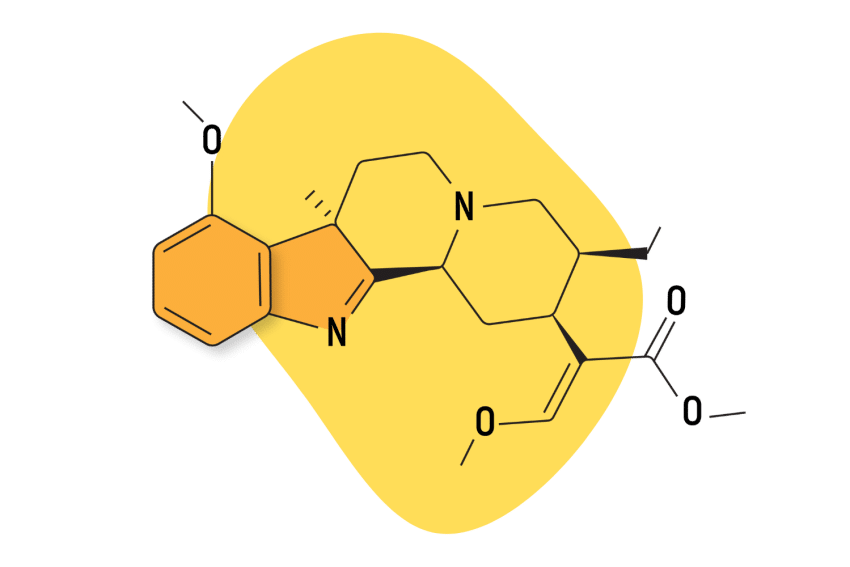Kratom vs. Cannabis: Uses, Benefits, & Interactions

Kratom and weed share many benefits, as they’re both commonly used to alleviate physical pain, anxiety, stress, and other conditions. Consequently, it is pretty common for people to want to use them together — though there are some things to consider before doing so.
Both kratom and marijuana have different varieties with distinct effects. Plus, everyone is different, and each user’s experience varies greatly with each substance.
In this article, we’ll cover the characteristics of each herb and what you should expect when using them together. We’ll also give you tips for mixing them safely.
Kratom & Cannabis Interactions
Kratom and cannabis have similar effects. This is especially the case with the indica variety and its high concentration of CBD, which acts as a painkiller. CBD works similarly to mitragynine, which stimulates opioid receptors.
Weed does not act on opioid receptors but can be a potent painkiller. CBD is also not an intoxicating cannabinoid, though it provides relaxation and pain relief, like many red-veined kratom strains.
When using cannabis and kratom together, make sure you have the information you need about the varieties and effects of each.
A potent sedative strain of kratom will increase the couch-lock effects of weed, but it also negates some of the effects of THC. Moreover, using a highly relaxing cannabis variety will oppose the effect of a stimulating kratom strain.
Furthermore, regardless of the variety, kratom and weed are metabolic competitors. This means that the body uses the same enzymes to metabolize them. Using them simultaneously makes your liver work harder, and it’ll take much longer for them to leave your body.
Related: Kratom vs. Adderall: Key Differences You Should Know.
Is It Safe to Mix Kratom & Cannabis?
Yes, mixing kratom and cannabis is safe if you keep the doses low and don’t do it for long.
As they are metabolic competitors, prolonged use of both herbs combined may cause a toxic accumulation, resulting in liver problems. Addiction is another factor to take into account.
Both kratom and weed are low-risk — they don’t generate tolerance or dependence as soon as many other substances. Still, prolonged usage of both will make the user used to the effect, increasing the likelihood of addiction and overuse.

It is common to use kratom and weed to deal with physical pain, sleeping disorders, or anxiety. Traditional medications like opiates or sleeping pills help manage these same conditions, even though they’re much more addictive and dangerous.
Nonetheless, always check with a doctor before mixing them, regardless if you’re going to use them recreationally or as part of medical treatment. This is crucial if you’re taking any other medication, as kratom and weed interact negatively with many other substances [1, 2].
What Is Marijuana?
Marijuana is an herb believed to have originated in Central Asia but is currently found worldwide.
Thanks to its adaptability and resistance, cultivation is possible almost everywhere. Its users even grow it indoors, using artificial lighting and watering methods.
There are three main varieties of marijuana. Though they all have the same active components, they have varying effects on the nervous system.

The three main varieties of cannabis include:
- Cannabis sativa: Tall plants with slim leaves and light-green colors possess high THC concentrations and give euphoric and energetic effects.
- Cannabis indica: Much shorter and broader, with dark-green colored leaves, usually carrying high CBD concentrations and used for pain relief and relaxation.
- Cannabis ruderalis: This variety has almost no psychoactive compounds, is highly resistant, and is often used to create hybrids of sativa and indica to help them adapt to very cold or dry weather.
What Are the Effects of Weed?
Cannabis is a popular recreational drug, and most people know it as such. Still, in recent years, its medicinal benefits have become more well-known, and it has gained track as an alternative medicine for managing physical pain, anxiety, and stress.
Marijuana’s active compounds affect the endocannabinoid system — hence the name “cannabinoids.” The herb contains over 100 of them, of which the principal ones are THC (tetrahydrocannabinol) and CBD (cannabidiol) — the ones most responsible for how the plant affects people.
Some of the most common effects include the following:
- Drowsiness
- Enhanced taste and other senses
- Euphoria
- Increased appetite
- Relaxation
- Time dilation
Some adverse side effects include:
- Anxiety
- Dry mouth and eyes
- Increased heart rate
- Paranoia
- Short-term memory loss
What Is Kratom?
Kratom (Mitragyna speciosa) is an evergreen tree that grows natively in Southeast Asian forests. Traditionally, natives would chew its leaves to take advantage of the herb’s stimulant and pain-relieving effects, making it a great aid for long days of physical labor.
Today, kratom is mostly commercialized as a powder — made from dry ground leaves — and is found in herbal or smoke shops as a natural supplement. Its popularity increased in recent years thanks to its impressive health benefits.

You will also find kratom in capsules or, less commonly, as tinctures or liquid extracts. Kratom’s effects are similar in these forms, though the potency of its liquid version is usually more substantial.
Typically, kratom acts as a stimulant in small doses while working as a sedative in more significant amounts, though its effects greatly depend on the strain used.
There are three main strains of kratom, each with different effects. They are typically named after the color of the leaf veins.
The three main varieties of kratom include:
- White-veined kratom: This is the most stimulating strain — somewhat similar to coffee. White-veined kratom is commonly used by students or athletes to increase energy levels and concentration.
- Red-veined kratom: The most sedating strain, effectively used as a painkiller or sleep aid. It is a massive help to those with insomnia and chronic pain.
- Green-veined kratom: These varieties are well-balanced and considered ideal for beginners. They are milder in potency, providing manageable painkilling and relaxing effects depending on the dose.
What Are the Effects of Kratom?
Kratom has more than 40 alkaloids with different effects. Some of them, like mitragynine, are responsible for the herb’s potent energy boosts and mood enhancements [3]. Others, like 7-hydroxymitragynine, provide powerful pain relief and act on the brain’s opioid receptors [4].
Kratom is also a mildly intoxicating substance but has many effects, which largely depend on the dose and strain. Small amounts often provide energy boosts, while high doses bring potent sedation.
In addition, kratom can improve brain function and increase focus and coordination. It also has tremendous anxiety-relieving effects and is a solid aid against depression symptoms.
For this reason, kratom is commonly used to battle addictions, as it’s pretty effective at reducing withdrawal symptoms. Moreover, it has few side effects and is not as addictive as other medications [5].
Related: How Long Does Kratom Last in the System?
Conclusion: Kratom & Cannabis
Mixing kratom and weed should cause no problems if you do so for a short time and in low-to-average doses. However, the prolonged use of both substances combined may result in health issues, regardless of ingestion methods.

As the body uses the same enzymes to metabolize them, mixing kratom and cannabis strains your digestive and cardiovascular systems. This will end up causing more harm than good in the long term.
Kratom and cannabis have many health benefits and can significantly aid those dealing with insomnia, chronic pain, or anxiety. Still, you should never self-administer kratom and cannabis simultaneously without consulting your doctor.
References
- Alsherbiny, M. A., & Li, C. G. (2018). Medicinal cannabis—potential drug interactions. Medicines, 6(1), 3.
- Hartley, C., Bulloch, M., & Penzak, S. R. (2022). Clinical Pharmacology of the Dietary Supplement Kratom (Mitragyna speciosa). The Journal of Clinical Pharmacology, 62(5), 577-593.
- Obeng, S., Kamble, S. H., Reeves, M. E., Restrepo, L. F., Patel, A., Behnke, M., … & McCurdy, C. R. (2019). Investigation of the adrenergic and opioid binding affinities, metabolic stability, plasma protein binding properties, and functional effects of selected indole-based kratom alkaloids. Journal of medicinal chemistry, 63(1), 433-439.
- Matsumoto, K., Horie, S., Takayama, H., Ishikawa, H., Aimi, N., Ponglux, D., … & Watanabe, K. (2005). Antinociception, tolerance and withdrawal symptoms induced by 7-hydroxymitragynine, an alkaloid from the Thai medicinal herb Mitragyna speciosa. Life sciences, 78(1), 2-7.
- Henningfield, J. E., Fant, R. V., & Wang, D. W. (2018). The abuse potential of kratom according the 8 factors of the controlled substances act: implications for regulation and research. Psychopharmacology, 235(2), 573-589.








